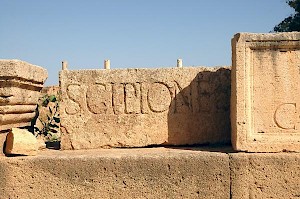Corpus Inscriptionum Latinarum
Corpus Inscriptionum Latinarum: the world's largest collection of Latin inscriptions.

Many Latin inscriptions have been published in the Corpus Inscriptionum Latinarum, which started in 1853, directed by the great German scholar Theodor Mommsen (1817-1903), who received the Nobel Price for his contribution to the study of the Roman Empire. Other famous scholars connected to the CIL are Otto Hirschfeld (1843-1922) and Hermann Dessau (1856-1931).
The project is divided into seventeen parts. The first one contains all Latin inscriptions from the Republic, the next parts are devoted to provinces (IV is Pompeii, VI is Rome), and the last three parts deal with domestic objects, military diploma's, and milestones. The collection is printed in seventy folio volumes, and thirteen additional volumes have appeared. They contain almost 200,000 inscriptions. That is about an entire bookcase, and most libraries have a little explanatory list to make searching easier. These volumes are very heavy, so it really helps to know that part XIII, volume 2, book 2 is about Germania Inferior.
Because the project is extremely important, its history reflects the history of Germany scientific and scholarly institutions of the Prussian kingdom, German Empire, Weimar Republic, Nazi Germany, the German Democratic Republic, and the German Federal Republic, have offered assistance to the epigraphic specialists. Today, the Berlin and Brandenburg Academy of Sciences and Humanities is responsible. A website with database is here.
A similar, online project is the Epigraphik-Datenbank by Clauss and Slaby.